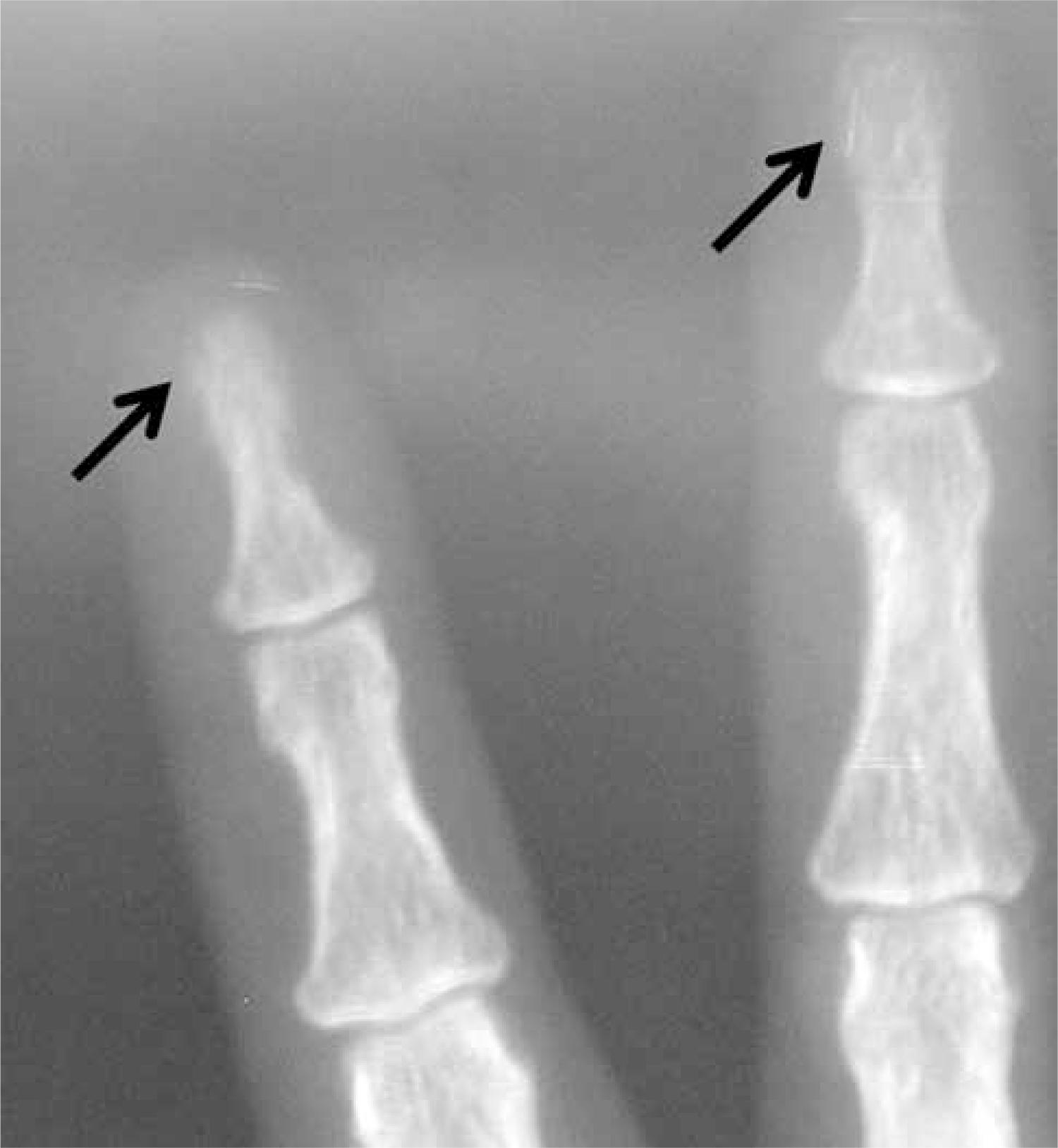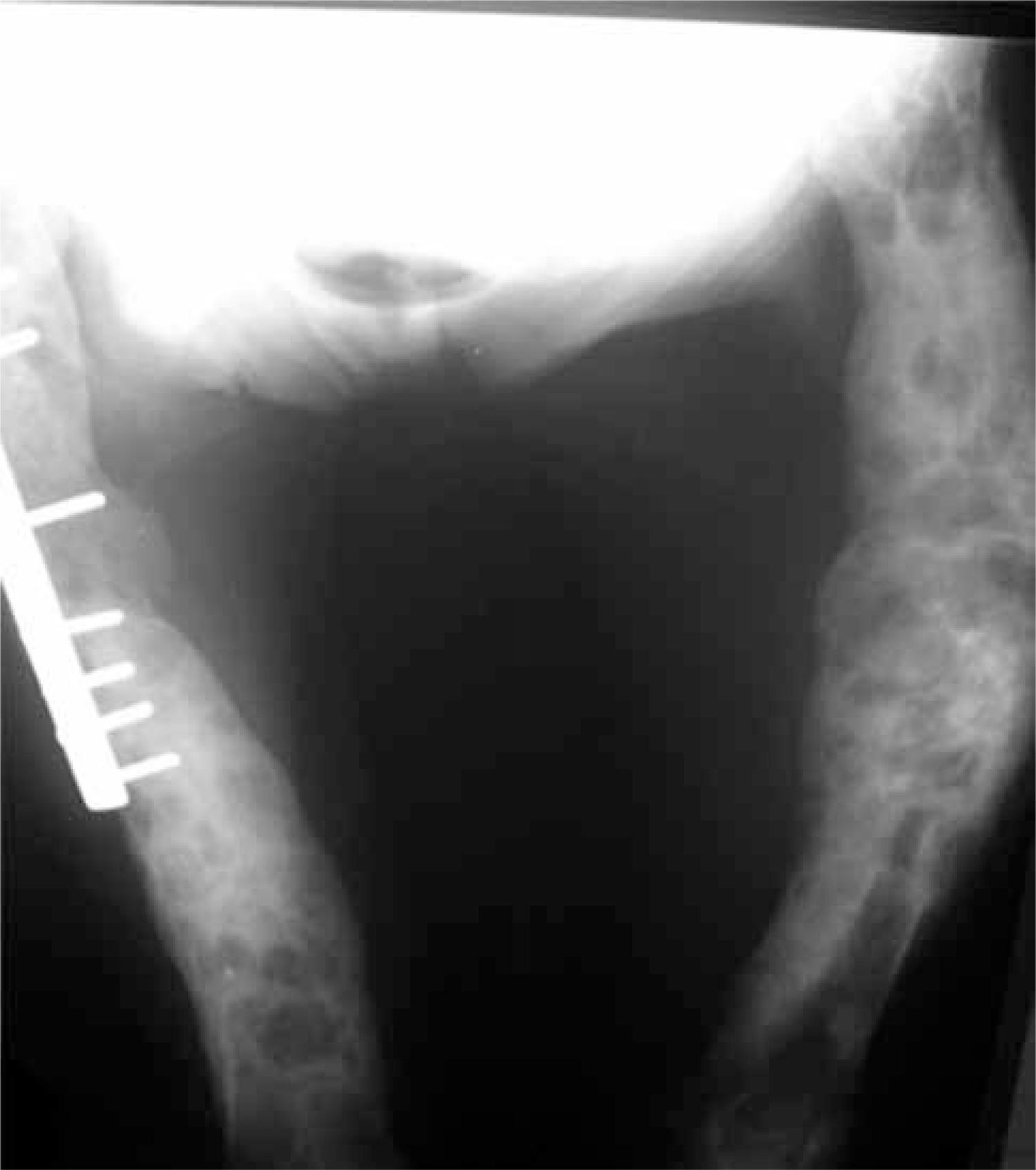Bone disease in severe primary hyperparathyroidism (PHPT) is described classically as osteitis fibrosa cystica (OFC). Bone pain, skeletal deformities and pathological fractures are features of OFC. Bone mineral density is usually extremely low in OFC, but it is reversible after surgical cure. The signs and symptoms of severe bone disease include bone pain, pathologic fractures, proximal muscle weakness with hyperreflexia. Bone involvement is typically characterized as salt-and-pepper appearance in the skull, bone erosions and bone resorption of the phalanges, brown tumors and cysts. In the radiography, diffuse demineralization is observed, along with pathological fractures, particularly in the long bones of the extremities. In severe, symptomatic PHPT, marked elevation of the serum calcium and PTH concentrations are seen and renal involvement is manifested by nephrolithiasis and nephrocalcinosis. A new technology, recently approved for clinical use in the United States and Europe, is likely to become more widely available because it is an adaptation of the lumbar spine DXA image. Trabecular bone score (TBS) is a gray-level textural analysis that provides an indirect index of trabecular microarchitecture. Newer technologies, such as high-resolution peripheral quantitative computed tomography (HR-pQCT), have provided further understanding of the microstructural skeletal features in PHPT.
Hyperparathyroidism; osteitis fibrosa cystica; nephrocalcinosis






